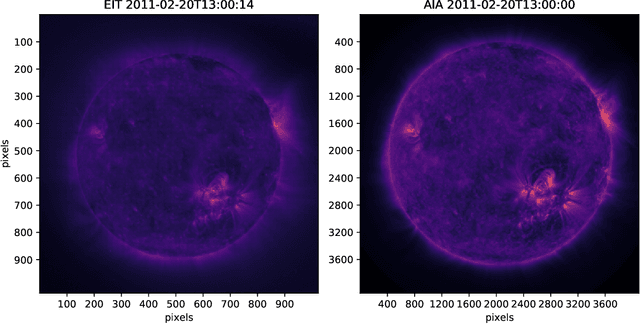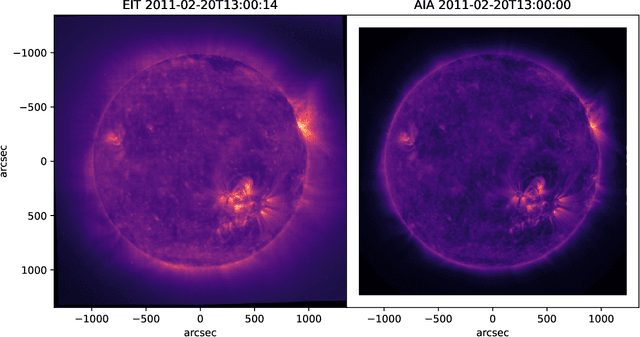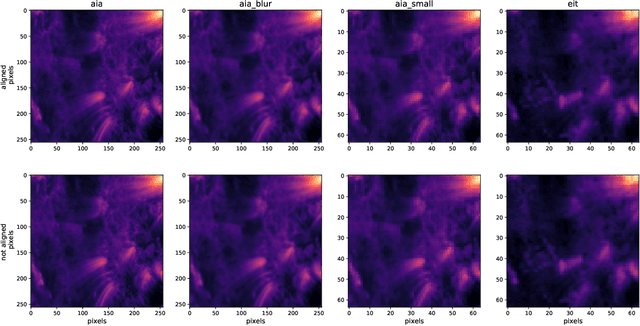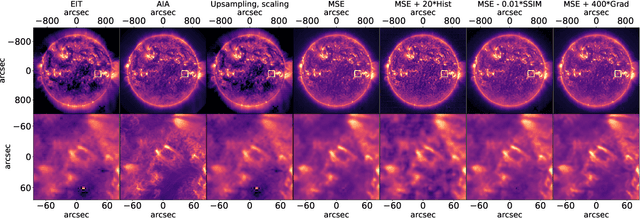Hazel M. Bain
MEMPSEP III. A machine learning-oriented multivariate data set for forecasting the Occurrence and Properties of Solar Energetic Particle Events using a Multivariate Ensemble Approach
Oct 26, 2023Abstract:We introduce a new multivariate data set that utilizes multiple spacecraft collecting in-situ and remote sensing heliospheric measurements shown to be linked to physical processes responsible for generating solar energetic particles (SEPs). Using the Geostationary Operational Environmental Satellites (GOES) flare event list from Solar Cycle (SC) 23 and part of SC 24 (1998-2013), we identify 252 solar events (flares) that produce SEPs and 17,542 events that do not. For each identified event, we acquire the local plasma properties at 1 au, such as energetic proton and electron data, upstream solar wind conditions, and the interplanetary magnetic field vector quantities using various instruments onboard GOES and the Advanced Composition Explorer (ACE) spacecraft. We also collect remote sensing data from instruments onboard the Solar Dynamic Observatory (SDO), Solar and Heliospheric Observatory (SoHO), and the Wind solar radio instrument WAVES. The data set is designed to allow for variations of the inputs and feature sets for machine learning (ML) in heliophysics and has a specific purpose for forecasting the occurrence of SEP events and their subsequent properties. This paper describes a dataset created from multiple publicly available observation sources that is validated, cleaned, and carefully curated for our machine-learning pipeline. The dataset has been used to drive the newly-developed Multivariate Ensemble of Models for Probabilistic Forecast of Solar Energetic Particles (MEMPSEP; see MEMPSEP I (Chatterjee et al., 2023) and MEMPSEP II (Dayeh et al., 2023) for associated papers).
Homogenising SoHO/EIT and SDO/AIA 171Å$~$ Images: A Deep Learning Approach
Aug 20, 2023



Abstract:Extreme Ultraviolet images of the Sun are becoming an integral part of space weather prediction tasks. However, having different surveys requires the development of instrument-specific prediction algorithms. As an alternative, it is possible to combine multiple surveys to create a homogeneous dataset. In this study, we utilize the temporal overlap of SoHO/EIT and SDO/AIA 171~\AA ~surveys to train an ensemble of deep learning models for creating a single homogeneous survey of EUV images for 2 solar cycles. Prior applications of deep learning have focused on validating the homogeneity of the output while overlooking the systematic estimation of uncertainty. We use an approach called `Approximate Bayesian Ensembling' to generate an ensemble of models whose uncertainty mimics that of a fully Bayesian neural network at a fraction of the cost. We find that ensemble uncertainty goes down as the training set size increases. Additionally, we show that the model ensemble adds immense value to the prediction by showing higher uncertainty in test data that are not well represented in the training data.
 Add to Chrome
Add to Chrome Add to Firefox
Add to Firefox Add to Edge
Add to Edge